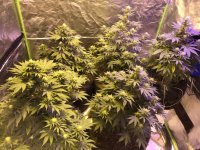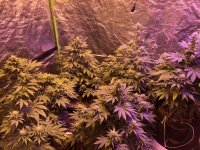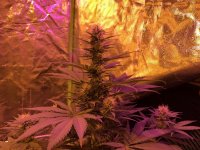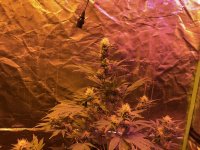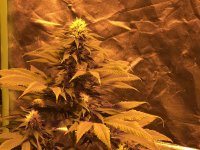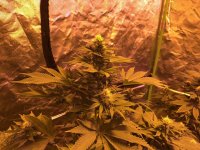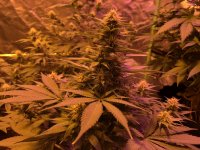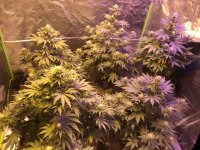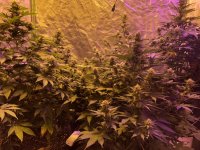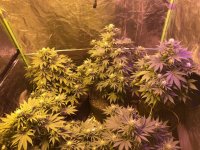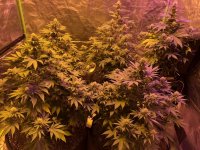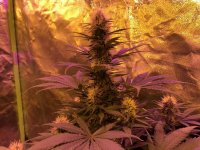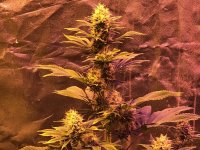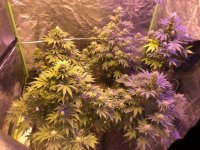From what i have read it is best to use an ounce cobbed and then a half ounce canary per bag. The good thing about those numbers is that that is when it is still fairly moist so it wont impact you final weights as much. The first page or two of that journal has a good flow chart to help guide you and then a few member spell it out step by step again throughtout it. i have not done it so I cannot say exactly how it works. I will say that Neiko ended up with a little mold trying to do it in a jar and Tangwena (I think that is how to spell his user name) was saying that the jar cured "cobs" were not as potent as the actual cobs are. So you are better off using vacuum bags. What I understand is to cut you crop and hang to dry 1 to 3 days later gather the amount of material you need and take 28-30 grams and roll it up in a corn husk you have soaked in water using a sushi mat. Tie that up with string and then roll up 14-15 grams and leave it unwrapped and put them both in a vac bag. Vacuum seal it and then put it in something that can hold 104* for 12-24 hours. I have seen people use a seedling mat that they put things on to keep the bag off the mat. They then cover the mat with a small tote that is upside down. They then wrap the tote in 1 to 2 towels to insulate it to hold temp. Most people set things up before they cobbed to figure out what they needed to do to get the temp where they wanted. I think they had one of the dual zone thermometers and put the prob in the tote to see what the temp read. After the sweat is done (what I just went over) You open them up and leave them out until they dry a bit. This is where you would want to get help because I do not know how dry to go here. Then you seal them up and keep them some place warm to ferment for 1 to 4 weeks I think and then you dry and cure for long term.I’m trying to learn absolutely everything about cob curing and was wondering if you had heard of or know anything about this that may not have been made public over with sweetsue. I’ve read 1 - 2 oz is best so that is going to be my range. It’s looking like my yield may be more bountiful than in the past (let’s hope!). I’m going to make sure I know the perfect conditions and all of that. I’d enjoy a deeper, heavier eye. Interested in the concept of chewing (my understanding is that it’s quite palatable (prob read around here somewhere) at the end of the process. I really want to experiment with the jars for deeper fermenting but seems difficult to get answers (not complaining as I know things like this tend to be somewhat obscure). I’ll probablg subject myself to criticism and document the cob thing over with sweetsue (and you get more value out of my posts by being able to see other users content).
That is a break down of how I understand it but you may want to ask people that have done it for a better explanation. Hope that helps bud.



